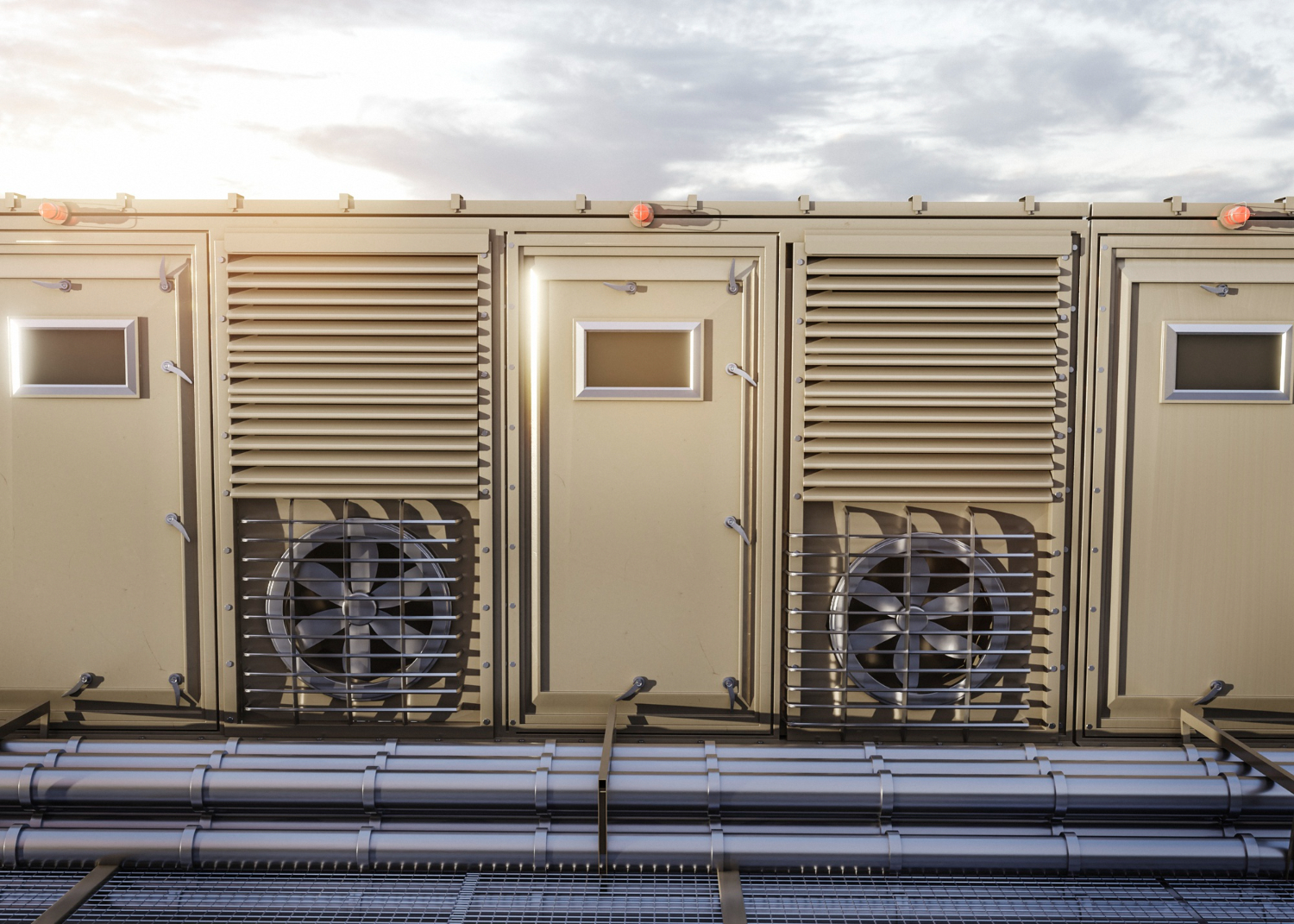PACKAGED ROOFTOP UNITS
When you choose JMI Mechanical, you’re getting skilled and friendly technicians with a trustworthy brand and reputation. We take pride in our work because we genuinely enjoy what we do, and it reflects in our service!
Packaged Rooftop Units (RTUs)
Packaged rooftop units, commonly known as RTUs, are vital parts of heating, ventilation, and air conditioning (HVAC) systems found in commercial buildings. Unlike traditional HVAC systems, which have separate indoor and outdoor units, RTUs are self-contained systems installed on rooftops. These units are responsible for regulating the indoor temperature and air quality of various commercial establishments, including retail stores, offices, and industrial facilities.
Advantages of Packaged Rooftop Units
Packaged rooftop units offer numerous advantages that make them popular choices for commercial buildings. One of the primary benefits of RTUs is their high energy efficiency. These units are designed to maximize energy savings, helping businesses reduce their utility costs while minimizing their environmental impact. By using advanced technology and efficient components, RTUs can provide optimal heating and cooling performance without consuming excessive energy.
Another advantage of packaged rooftop units is their compact design. Unlike traditional HVAC systems, which require separate indoor and outdoor units, RTUs are self-contained systems that are installed on the rooftop of the building. This space-saving design allows businesses to utilize their indoor space more efficiently, as they do not need to allocate valuable floor space for HVAC equipment. Additionally, the installation and maintenance of RTUs are relatively simple, thanks to their self-contained nature and accessible rooftop location.
Understanding the Parts of a Packaged Rooftop Unit
When you hear about a Packaged Rooftop Unit (RTU), it might sound not very easy, but it’s actually made up of several important parts that work together to keep your building comfortable. Let’s break down these components in simpler terms so you can understand how they all fit together.
1. Compressor: Think of the compressor as the heart of the RTU. Its job is to pump refrigerant through the system, which helps to cool the air inside the building. It’s like the engine in a car—it keeps everything running smoothly.
2. Condenser Coil: The condenser coil is like a radiator in a car. It helps to release the heat that the refrigerant absorbs from inside the building. This process is what makes the air coming out of the RTU feel cool.
3. Evaporator Coil: On the flip side, the evaporator coil helps to absorb heat from inside the building, which cools down the air. It’s like a sponge soaking up water—it takes in the heat and makes the air cooler.
4. Air Handling Unit: The air handling unit is a crucial part of the building’s ventilation system. Think of it as a giant fan that circulates cooled air throughout different areas, ensuring everyone stays comfortable regardless of their location.
5. Filters: Filters act as the lungs of the RTU, working to purify the air by capturing dust, pollen, and other tiny particles. This ensures that the air circulating through the system is fresh and safe for you to breathe.
6. Controls: Controls are like the brains of the RTU. They tell the other components when to turn on and off, and they help to regulate the temperature and humidity inside the building. It’s like having a smart thermostat that knows exactly how to keep you comfortable.
How These Components Work Together
Now that we know what each component does let’s see how they all work together to keep your building comfortable.
Imagine it’s a hot summer day, and you’re inside a building with an RTU. The compressor starts pumping refrigerant through the system, which cools down the condenser coil. As the air passes over the coil, it releases the heat outside, making the air inside the building cooler.
Why These Components Are Important
Each component of the RTU plays a crucial role in keeping your building comfortable. Without the compressor, the refrigerant wouldn’t be able to cool the air. Without the condenser coil, the heat wouldn’t be able to escape. Without the evaporator coil, the air wouldn’t be able to cool down. Without the air handling unit, the cooled air wouldn’t be able to reach you. And with the filters and controls, the air is clean and properly regulated.

Different Types of Rooftop Air Conditioners
You can find different kinds of rooftop air conditioners to match various needs for heating and cooling. These include ones that only cool, ones that only heat, ones that use a heat pump, and ones that can switch between different fuel sources. They’re made to fit different weather conditions and building requirements.
Things to Think About When Picking a Rooftop Air Conditioner
When you’re choosing an air conditioner for a store or office building, there are a few important things to think about. It would help if you considered how big the unit is and how much cooling or heating power it has. You also want to look at how energy-efficient it is, whether it can handle the local climate, and if it’s a good value for the money. Picking the right air conditioner can help your business save money and keep everyone comfortable.
Tips for Setting Up and Taking Care of Packaged Rooftop Units
Ensuring the proper installation and consistent maintenance of your rooftop unit is crucial for its long-term functionality and efficiency. Simple yet significant steps like selecting an optimal location, adhering to regular filter changes, and scheduling professional inspections can collectively contribute to the seamless operation and longevity of your unit. By attentively addressing these maintenance aspects, you can significantly extend the lifespan and performance of your rooftop unit.
Problems You Might Face and How to Fix Them
Even though rooftop units are usually pretty dependable, sometimes they can have issues like not enough air blowing, leaks in the refrigerant, or problems with the electricity. It’s important to figure out what’s going wrong quickly and get it fixed so your building stays comfy and there’s no interruption to your heating or cooling.

Looking Ahead and Success Stories
The future of packaged rooftop units (RTUs) looks bright, with exciting advancements on the horizon. These advancements include integrating RTUs with smart building systems, adding features for better energy efficiency, and enabling remote monitoring capabilities. These upgrades are designed to make commercial spaces even more comfortable, convenient, and environmentally friendly.
Many businesses have already reaped the rewards of installing RTUs. By doing so, they’ve noticed improvements in comfort levels and significant energy savings. Real-world examples from retail stores, factories, and office buildings illustrate just how effective these systems can be in various settings.
Understanding Environmental Impact and Sustainability in HVAC Systems
Following Rules and Regulations for HVAC Systems
When it comes to HVAC systems like RTUs, there are rules and standards that they need to follow to make sure they’re safe and efficient. These rules are put in place by organizations like Energy Star, ASHRAE, and local building codes. Let’s take a closer look at what these standards mean.
Energy Star ratings are like grades for how energy-efficient a product is. When an HVAC system has an Energy Star rating, it means it’s good at using energy wisely, which is better for the environment and saves money on energy bills.

Following Rules and Regulations for HVAC Systems
When it comes to HVAC systems like RTUs, there are rules and standards that they need to follow to make sure they’re safe and efficient. These rules are put in place by organizations like Energy Star, ASHRAE, and local building codes. Let’s take a closer look at what these standards mean.
Energy Star ratings serve as a valuable indicator, akin to grades, that assess the energy efficiency of a product. When an HVAC system boasts an Energy Star rating, it signifies its proficiency in utilizing energy judiciously. This not only benefits the environment by promoting sustainable practices but also leads to cost savings on energy bills for consumers.
Understanding the Costs and Benefits of RTUs
When businesses think about putting in rooftop HVAC units (RTUs), they might see it as a big expense at first. But as time goes on, it turns out to save money, making the initial cost worth it. To figure out if getting RTUs is a good idea, businesses can look into different ways to pay for them and see how much money they’ll save over the long term.
Comparing RTUs with Other HVAC Systems
RTUs are different from other types of HVAC systems, such as split systems, centralized HVAC systems, and ductless mini-split systems. Each type has its pros and cons, and knowing these can help businesses pick the best one for their building.

Wrapping Up: The Vital Role of Packaged Rooftop Units
In summary, packaged rooftop units (RTUs) are vital elements within commercial HVAC systems, providing energy-efficient and space-saving solutions for heating and cooling requirements. As technology advances and sustainability becomes increasingly important, RTUs will remain pivotal in ensuring comfortable and efficient indoor environments for businesses.
Should you ever require maintenance or repairs for your Packaged Rooftop Units, you can trust JMI Mechanical to deliver reliable service. Reach out to us today for all your HVAC needs!
FREE QUOTE
Do you need help with HVAC or Plumbing service or maintenance? Fill out this form to get in touch with JMI Mechanical.
OFFICE LINE
ADDRESS
5610 Dividend Rd. Suite A, Indianapolis, IN 46241
WORKING HOURS
OPEN 24/7/365
OFFICE LINE
ADDRESS
5610 Dividend Rd Suite A, Indianapolis, IN 46241
WORKING HOURS




